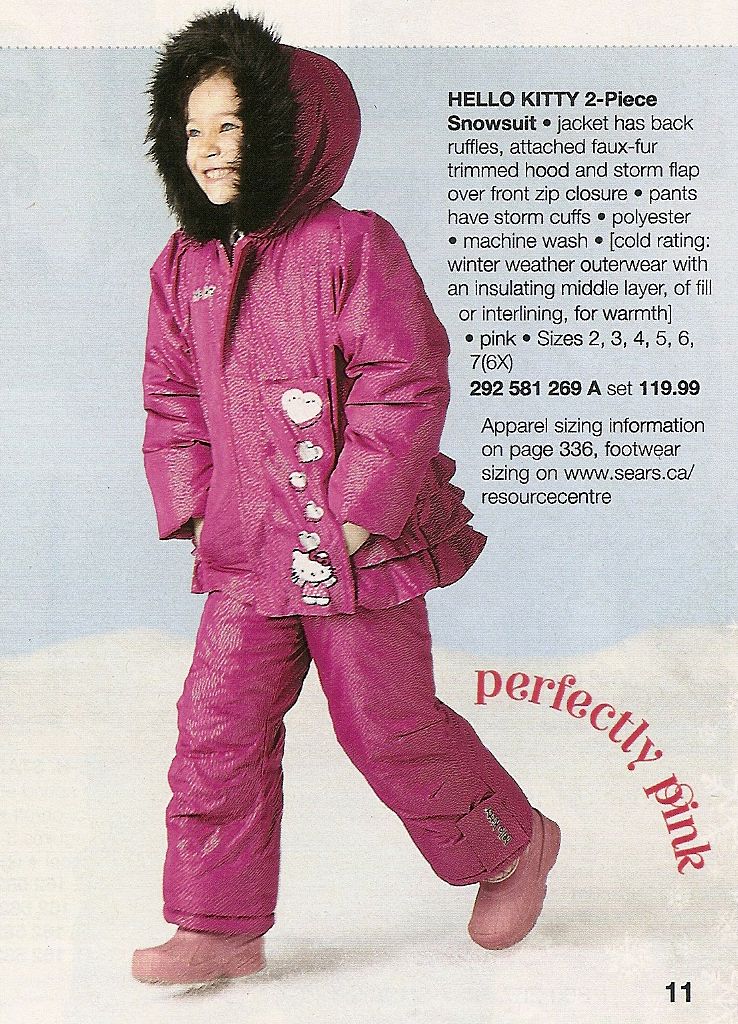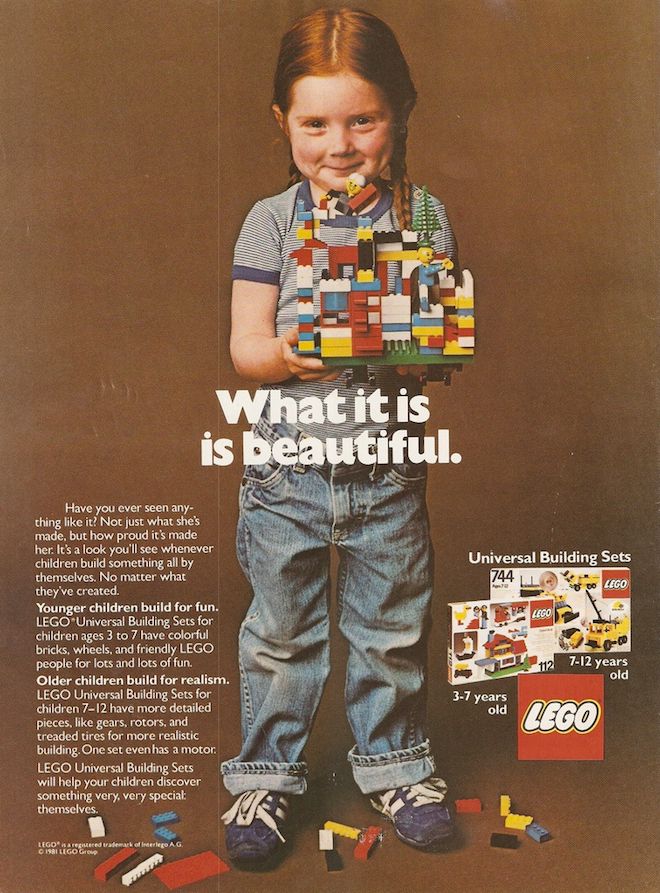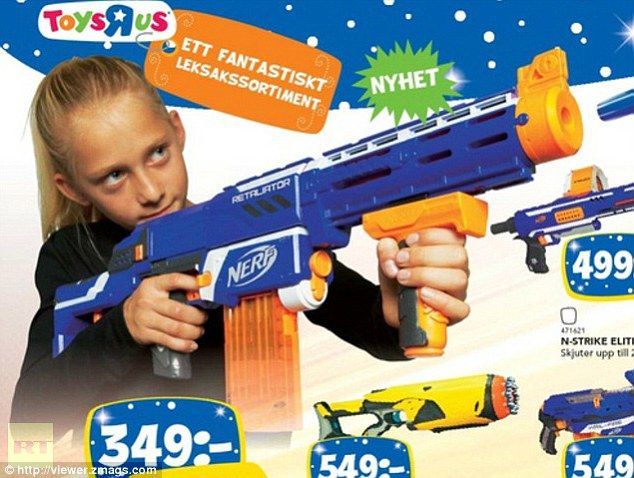In
honour of the holiday season, this week we’re going to do something a
little different. At this time of year more than any other, we face a
constant onslaught of advertising, telling us what we should want and
who we should want to be. To us, this is yet another opportunity for the
media to misrepresent, well, whole swaths of people, but often women
and girls in particular. So, in another nod to the commercial Christmas
spirit, we’d like to discuss the gender segregation of holiday
advertising and why it just might be the most frustrating part of the
so-called happiest time of the year.
A
couple of weeks ago, my mother and I went shopping for some clothing
for my nephew and cousins. As we entered Carter’s-OshKosh, I was taken
aback by the difference between the two sides of the store. On the right
side, there was a wide variety of clothing styles in a vast array of
colours; on the left there was... pink. One side looked like a kids’
clothing store, and the other looked like a Valentine’s Day display.
Now, don't get me wrong. Pink as a colour is lovely; pink as a visual indicator of an object's "girls only" status is not.
We
checked out the boys’ side first, its gender affiliation made obvious
by the fact that none of the shirts had random ruffles on them. When it
came to picking things out for my nephew and cousin, we were spoiled for
choice. Then we entered Girl World, where everything was pink and
sequined, emblazoned with floral patterns or “cute” sayings (or, in many
cases, just the word “cute”). Throwing a glance back into Boy World, I
noticed a shirt that read “Boy Genius;” turning to the ultra-feminine
landscape before me, I glimpsed the girls’ equivalent: a shirt
emblazoned with a heart and the words “Seriously Cute.” Eventually, we
completed our expedition, having secured a single specimen of the rare
green shirt. I might have thought it had escaped from Boy World, if the
ruffles didn’t prove that it was native to the region.
This
was such a troubling experience, I think, not because the gender split
was new or surprising, but because it was so starkly represented.
And brick and mortar kids’ clothing stores are hardly the only ones guilty of this rigid categorization. In the Sears Wish Book,
a catalogue I’ve browsed every December for as long as I can remember,
something like the first few dozen pages are split into gift types like
“Cute Gifts” and “Gamer Gifts.” This seems like an admirably
gender-neutral approach, until you actually pay attention to the models
using the items advertised. “Gamer Gifts” features T-shirts that are
only available in men’s sizes, “Totally Cool Gifts” shows a boy using
spy gear, and “Galactic Gifts” (or “Star Wars Paraphernalia,” as it
could also be known) contains both of these signs of female exclusion.
Girls and women do get some items in “Super Gifts” (superhero things)
and “Winning Gifts” (hockey stuff), but their only major categories are
“Cute Gifts” (so much pink and Hello Kitty, it burns) and Playboy
accessories. As if that weren’t enough, the “Galactic Gifts” spread
shows a boy wielding a lightsaber with the words “take that, galactic
empire” written across the image; by contrast, the “Cute Gifts” model is
a girl in a pink Hello Kitty snowsuit just walking with an utterly
unnecessary “perfectly pink” written next to her.
This
continues throughout the catalogue, to the point that I actually
started treating it as a bit of a guessing game. What gender was the
model pictured using a punching bag? What about the superhero action
figures, the fake guns, the toy cars, or anything from the movie Cars?
Who could possibly be pictured playing with fairies, dolls, tea sets,
or anything pink and princess-y? The answers are disturbingly obvious.
As
for clothing, again, the shirts on offer for girls champion really
dubious things. One has the image of Smurfette and the words “Born to be
famous,” while another shows an image of Hello Kitty wearing glasses
and the text, “Geek is the new cute.” While boys get shirts depicting
superheroes and proclaiming their superior intelligence, girls get the
message that their value is based on their appearance and their
celebrity. And, while the latter would be pretty cool if the girl in
question became famous for wielding major political power or making an
important scientific discovery, the fact that they used Smurfette
somehow suggests otherwise.
This
is not to say that beauty can’t be part of the marketing for girls.
Just look at this ad from 1981. First, nothing in this picture is pink.
The girl is using real Lego and not the awful new Lego Friends sets;
it’s a house that she created, not one that was pictured on the side of
the box. More importantly, though, it’s the house that is labelled
“beautiful,” not the girl. What is beautiful is the object she made and
the imagination that produced it.
I
mean, read the accompanying text: “Have you ever seen anything like it?
Not just what she’s made, but how proud it’s made her. It’s a look
you’ll see whenever children build something all by themselves. No
matter what they’ve created.” That description, in and of itself, is a
beautiful thing.
Unfortunately, that ad was released more than thirty years ago. Today, Lego produces ads like this one.
But
all hope is not lost. In a viral video that has amassed over four million hits, a little girl named Riley Barry manages to isolate the
problem of gender-stereotyped marketing while standing in the middle of
an aisle of girls’ toys. She bemoans the fact that most of the toys
being marketed to her demographic are pink, and argues that both girls
and boys would like to play with both dolls and superheroes. Even if she
is merely parroting what she’s heard her parents say, as some critics
have claimed, there are certainly worse things for parents to teach
their children than to question the social roles they are paying to
embrace.
Thirteen-year-old
Mckenna Pope has started a campaign to get Hasbro, the manufacturers of
the Easy Bake Oven, to include boys in their marketing. Her younger
brother wants the toy for Christmas, but he has been convinced by the
advertisements that the product is only intended for girls. Mckenna’s petition on Change.org has collected over 31,000 signatures. (I signed
it, because I had an Easy Bake Oven and I fully support any campaign
that would allow all children to feel the pride that comes with eating
that first batch of barely edible brownies.)
Real
change has already occurred in Sweden, where the largest toy chain, Top
Toy, has changed its marketing to a gender neutral model following a
reprimand for discrimination by the country’s advertising watchdog.
Their catalogue now shows boys playing with dolls and girls wielding toy
assault weapons. It’s awesome.
Then
there’s the response to one of my personal favourite marketing fiascos
of the last year: the Bic for Her pen. Both men and women responded to
the premiere of the “lady-pen” with often hilarious reviews, many female
reviewers’ comments made all the more perfect by the thinly-veiled
bitterness caused by a lifetime spent having to buy things that are
strong enough for a man, but made for a woman. Even Ellen Degeneres
weighed in, a few weeks late but scathing enough to make up for the
delay.
We’d
like to end this post on a truly positive note, but all we can really
say is that, although gender stereotyped marketing is pervasive and
pernicious, there is hope. Just, ironically, not around Christmas.




No comments:
Post a Comment